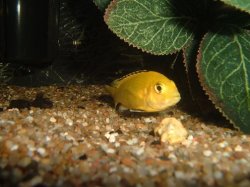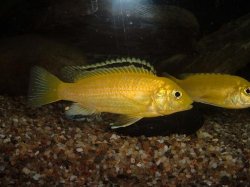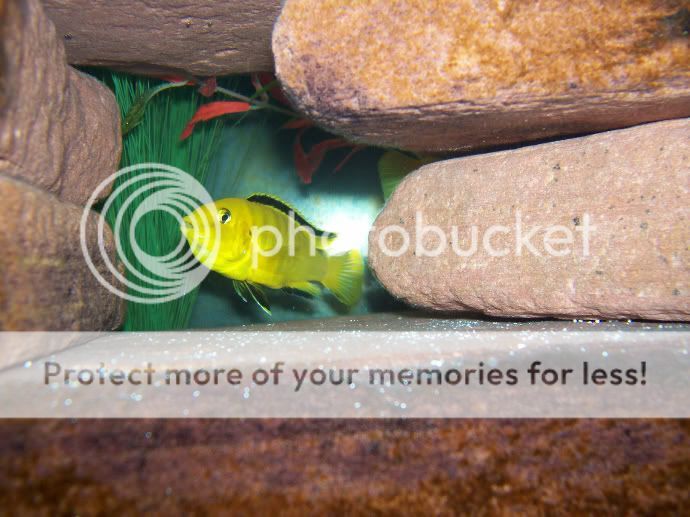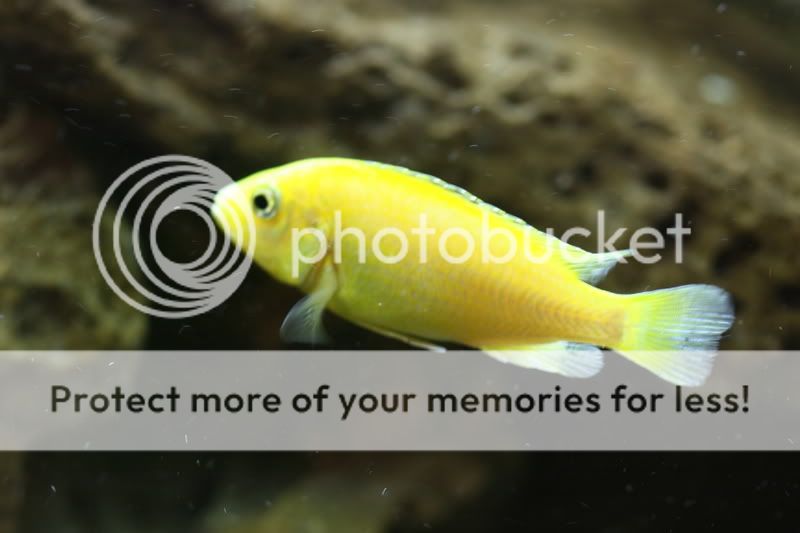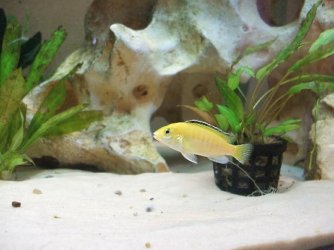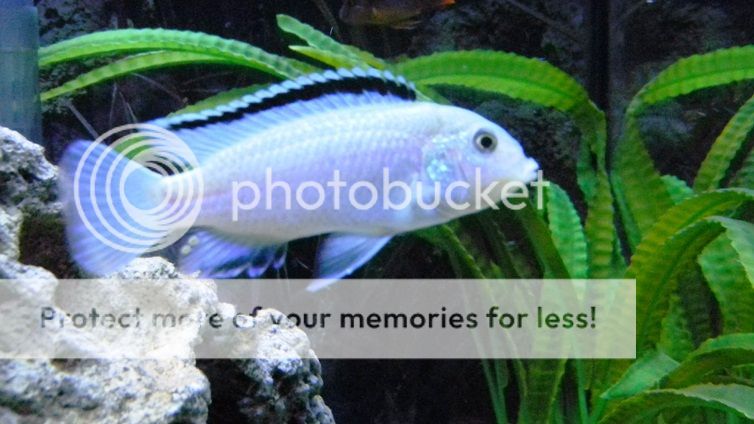thecichlidaddict
Fish Herder
Common name/s: Electric Yellow, Yellow Lab, Lemon Yellow
Scientific name: Labidochromis caeruleus
Family: Cichlidae
Origin: Lake Malawi, Africa
Maximum size: 5"
Care: This is a hardy and easily kept cichlid from the mbuna family, and an excellent choice for beginners and experienced aquarists alike. They are a very social fish that do well in groups of 3 or more. The minimum recommended tank size for these fish is 30 gallons. The aquarium should be decorated with a number of hiding spots including caves of various sizes. Sand substrate is appreciated by these fish, but is not necessary. Yellow Lab's are best kept in water with a PH of 7.5 or higher, at a temperature between 75° and 80°. These cichlids make excellent tankmates for most mildly and moderately aggressive mbuna, aulonocara, and haplichromines from lake Malawi.
Feeding: Daily feedings of high quality cichlid pellets or flakes. Suppliments of spirulina flake are recommended. Live or frozen invertibrates including brine shrimp and mysis may also be fed as a supplement. In the wild these fish are insectavores and micro-preditors.
Sexing and breeding: As young fish Yellow Labs are nearly impossible to sex. As they get older the males will grow faster and larger then the females. As they mature, males will typically display more aggressive behavior then females, and will often be seen digging a nest in a favourate cave. These fish are unselective breeders, and dominent males will mate with any present females. Nothing further then keeping conditions clean is necessary to promote breeding. As mouthbrooders, females will incubate and hatch the eggs in her buchal pouch, and then continue to hold the fry until the yolk sacs have been consumed. A typical holding period for this cichlid is 4 weeks, and the female will not eat during this time. Once spit, fry are left to fend for themselves. In order to raise fry the female should be seperated into a holding tank, and removed once the fry have been spit. Fry can be fed powdered cichlid food along with baby brine shrimp, mysis, or cyclops as suppliments.
*Labidochromis sp. will crossbreed, and having only one species from this genus in an aquarium is encouraged.
Scientific name: Labidochromis caeruleus
Family: Cichlidae
Origin: Lake Malawi, Africa
Maximum size: 5"
Care: This is a hardy and easily kept cichlid from the mbuna family, and an excellent choice for beginners and experienced aquarists alike. They are a very social fish that do well in groups of 3 or more. The minimum recommended tank size for these fish is 30 gallons. The aquarium should be decorated with a number of hiding spots including caves of various sizes. Sand substrate is appreciated by these fish, but is not necessary. Yellow Lab's are best kept in water with a PH of 7.5 or higher, at a temperature between 75° and 80°. These cichlids make excellent tankmates for most mildly and moderately aggressive mbuna, aulonocara, and haplichromines from lake Malawi.
Feeding: Daily feedings of high quality cichlid pellets or flakes. Suppliments of spirulina flake are recommended. Live or frozen invertibrates including brine shrimp and mysis may also be fed as a supplement. In the wild these fish are insectavores and micro-preditors.
Sexing and breeding: As young fish Yellow Labs are nearly impossible to sex. As they get older the males will grow faster and larger then the females. As they mature, males will typically display more aggressive behavior then females, and will often be seen digging a nest in a favourate cave. These fish are unselective breeders, and dominent males will mate with any present females. Nothing further then keeping conditions clean is necessary to promote breeding. As mouthbrooders, females will incubate and hatch the eggs in her buchal pouch, and then continue to hold the fry until the yolk sacs have been consumed. A typical holding period for this cichlid is 4 weeks, and the female will not eat during this time. Once spit, fry are left to fend for themselves. In order to raise fry the female should be seperated into a holding tank, and removed once the fry have been spit. Fry can be fed powdered cichlid food along with baby brine shrimp, mysis, or cyclops as suppliments.
*Labidochromis sp. will crossbreed, and having only one species from this genus in an aquarium is encouraged.




